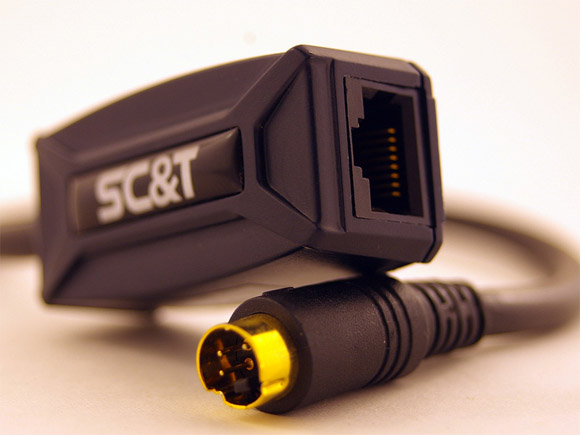Over the course of a conversation with Peter I became aware that he was oblivious to the existence of video baluns. This made me wonder, how many other VJs are going through life as he is: Anxious and empty, unsure whether the venue he’s playing at will be able to do justice to the imagery he creates, or if they’ll push his feed through some kind of horrible, unshielded composite cable which has been draped over hot lights and snacked on by rats since the last refit in 1982.
There’s no shame in this, I too was living under this ominent shadow of doubt. Until I discovered baluns.

A staple of the security industry, video baluns allow you to send S-Video, Composite, Component or even VGA signals through normal CAT5 ethernet cable. This allows a far greater cable run with less loss of quality. They’re reasonably inexpensive (US$30 or AU$40 each, you’ll need 2), and since discovering them I’ve taken a couple and a hefty coil of CAT5 to every gig, locally and internationally. They’ve saved my signal many times, both from the ignominy of composite and the embarassment of “What? The stage manager didn’t say that you’d have to bring your own cable for the projector? Well no, we don’t make the DJ bring his own speakers and hook up foldback 15 minutes before the doors upen, but you’re a VJ, you should be used to backbreaking toil and endless disappointment.”
I’m sorry, I seem to have become distracted, so I’ll get to the point: If you’re a gigging VJ you should have a couple of these in your kit. One for each end, and some network cable in the middle, that’s all you need to know. Look, I’ll even provide links.
US Readers: A froogle search for “svideo balun“, or “vga balun” should get you on the way.
Australian Readers: Jaycar (I wonder how many articles I need to write before they become a sponsor) have your back. SVideo ($39.95 each) or VGA ($149.95 for a pair).